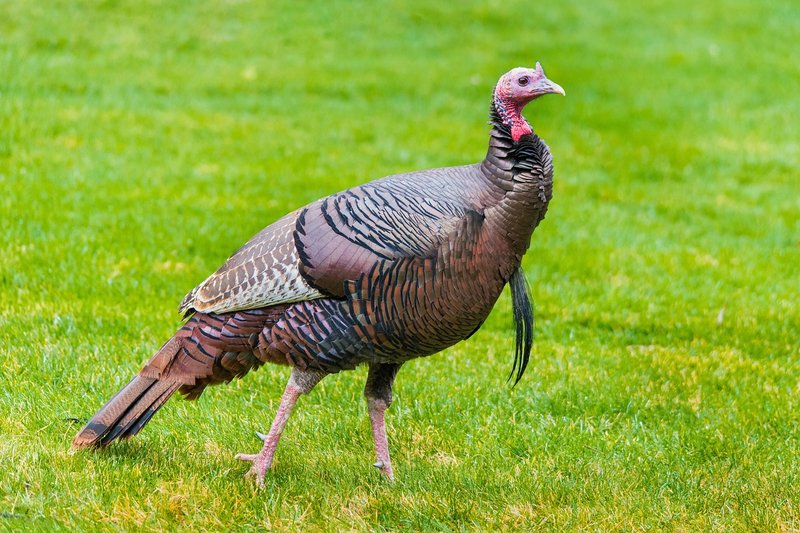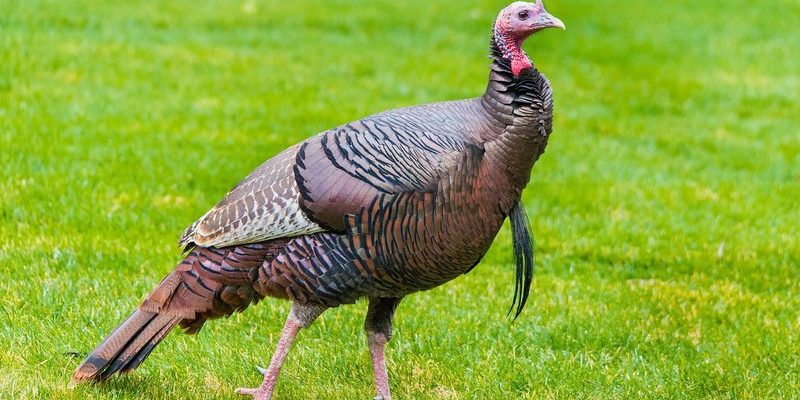
Imagine turkeys as the unsung heroes of the bird world. Despite their prominence in culture and cuisine, their survival story is filled with twists and turns. In this article, we’ll explore the turkey’s current situation in terms of conservation, diving into their habitat, threats, and what it means to be threatened or endangered. Let’s delve into this feathered topic together!
Understanding Turkey Species
There are a couple of main species of turkeys: the wild turkey (*Meleagris gallopavo*) and the domesticated turkey (*Meleagris gallopavo domesticus*). The wild turkey, with its impressive fan of feathers and distinctive call, is native to North America, while the domesticated variety has been bred for food.
You might be wondering why it matters which type of turkey we’re talking about. Well, their conservation status can vary greatly between the two. While wild turkeys have made a remarkable comeback in certain areas, domesticated turkeys face their own set of challenges that influence their populations on farms.
Wild Turkeys: A Success Story
In the early 1900s, wild turkeys faced serious decline due to overhunting and habitat loss. At one point, their populations dipped to nearly extinction levels. However, thanks to dedicated conservation efforts, including reforestation and hunting regulations, wild turkeys have rebounded impressively.
Today, they are classified as Least Concern by the International Union for Conservation of Nature (IUCN). You can find them roaming in forests, grasslands, and even suburban areas. Watching a group of wild turkeys meandering around can be a delightful sight and a testament to effective wildlife management.
Domesticated Turkeys: Different Challenges
On the flip side, domesticated turkeys are often bred for mass production, resulting in a species that can struggle with health issues. Many commercial breeds are engineered for quick growth and large breast sizes. While this makes for a bigger Thanksgiving feast, it can lead to serious problems for the birds.
Many domesticated turkeys have difficulty mating naturally or experiencing health complications due to their size. Consequently, their conservation status can be viewed through a lens of animal welfare rather than outright survival. Their populations are largely controlled by human demand, which makes their future uncertain.
What Does “Threatened” or “Endangered” Mean?
You might hear terms like “threatened” and “endangered” thrown around, but what do they actually mean in relation to turkeys? The definitions are essential to understand the risks facing different species.
– Endangered: This status refers to species at serious risk of extinction in the near future. They often have very limited populations, facing severe threats from habitat loss, poaching, or disease.
– Threatened: This term is for species that are likely to become endangered in the foreseeable future. They might still have relatively stable populations but face various risks that could jeopardize their survival.
For wild turkeys, being labeled as Least Concern means they’re currently stable. However, it’s important to keep in mind that changing environmental conditions or increased hunting pressure can quickly turn the tide.
The IUCN Red List and Turkeys
The IUCN Red List is a valuable resource for tracking the conservation status of various species, including turkeys. Wild turkeys fall under the Least Concern category, indicating that their populations are generally healthy.
However, this doesn’t mean we should be complacent. Conservationists continuously monitor populations and advocate for sustainable hunting and habitat protection to ensure wild turkeys remain abundant. The situation can change, and being proactive is key to their future.
Why This Matters
The status of turkeys goes beyond just the birds themselves. These animals play a significant role in their ecosystems, helping to control insect populations and providing food for predators. Understanding their conservation status can lead to better wildlife management practices that benefit broader biodiversity.
Moreover, wild turkeys also connect people to nature. Birdwatchers and hunters alike enjoy their presence in the wild, creating opportunities for learning and appreciation of wildlife. By ensuring their populations remain stable, we contribute to a healthier environment for everyone.
Threats Facing Turkeys
Even if wild turkeys are doing well now, they’re not completely out of the woods. Several threats can impact their survival and well-being.
1. Habitat Loss: Urban development and agriculture can significantly reduce their natural habitats. As forests are cleared and fields are paved over, turkeys lose the spaces they need to thrive.
2. Climate Change: Changes in temperatures and weather patterns can disrupt their breeding and feeding patterns. For instance, unusually early springs can throw off the timing of nesting, resulting in lower hatch rates.
3. Hunting Pressure: While regulated hunting can help manage populations, overhunting can lead to significant declines in local groups of wild turkeys. Setting appropriate hunting limits is crucial to keeping numbers stable.
4. Predation and Disease: Increased predation from raccoons, coyotes, and other animals can threaten turkey chicks, while diseases can affect their populations. Maintaining a healthy ecosystem is vital to minimizing these risks.
Conservation Success Stories
Fortunately, there have been great strides made in turkey conservation. Organizations like the National Wild Turkey Federation work tirelessly to promote habitat restoration and preservation, hunting education, and awareness about the importance of these birds.
Various states have implemented conservation programs that support wild turkey populations. These initiatives often involve responsible hunting practices, habitat management, and public education campaigns that enhance understanding and appreciation for wild turkeys.
What Can You Do to Help?
Everyone can play a role in turkey conservation, even if you’re just an everyday nature enthusiast. Here are a few ways to help:
– Support Conservation Organizations: Join groups dedicated to wildlife conservation. Your membership can help fund projects that protect habitats and manage turkey populations.
– Practice Responsible Outdoor Habits: If you’re an outdoor enthusiast, ensuring that you practice Leave No Trace principles is incredibly important. Be mindful of wildlife, and respect their habitats during your outdoor adventures.
– Educate Others: Share what you learn about turkeys and conservation. Awareness can spark interest and promote better understanding of these amazing birds.
– Participate in Local Activities: Join birdwatching groups or participate in local conservation efforts, such as habitat restoration projects. These hands-on experiences can deepen your connection to wildlife.
Enjoying Turkey Watching
If you want to observe wild turkeys, consider heading out to local parks or wildlife reserves. You might see them foraging or strutting around, showing off their impressive plumage. Just remember to keep a respectful distance and enjoy the moment!
In the grand story of wildlife, turkeys are doing relatively well, especially their wild counterparts. They remind us of the delicate balance we maintain with nature—while there are still challenges ahead, dedicated efforts are helping to ensure their survival.
By staying informed and engaging in responsible practices, you can play a part in supporting these fascinating birds. The next time you see a turkey, whether it’s in the wild or on your plate, you’ll know there’s a deeper story of resilience and conservation standing behind it. Let’s keep this story going strong!

